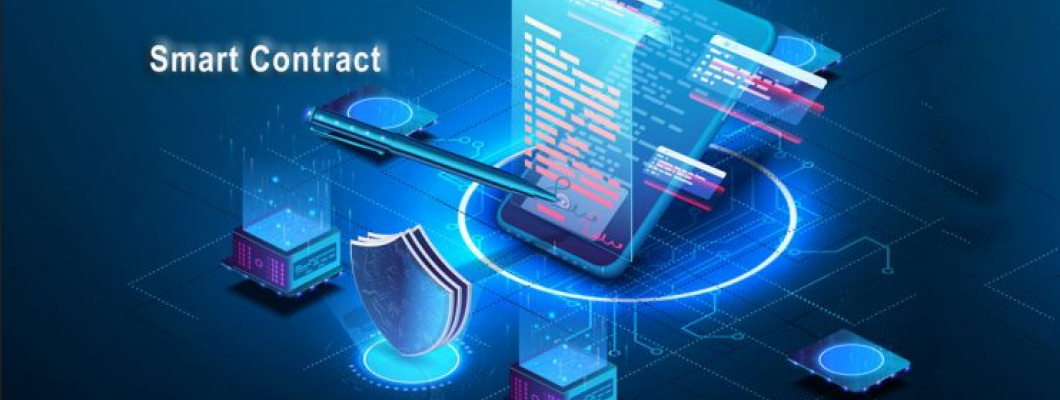
Introduction
The blockchain revolution is well underway, transforming industries with decentralized applications (dApps), trustless interactions, and transparent operations. At the core of these transformations lie smart contracts—self-executing programs that automate transactions and agreements on the blockchain. However, traditional smart contract development has posed a significant barrier to entry due to the technical expertise required in blockchain programming languages such as Solidity or Vyper.
Enter no-code smart contract platforms. These tools are bridging the gap between developers and non-developers, enabling anyone to build, test, and deploy smart contracts with little to no coding knowledge. They are democratizing blockchain development and opening doors for entrepreneurs, creators, and businesses to harness the power of decentralized technology.
What Are No-Code Smart Contract Platforms?
No-code platforms for smart contracts are development environments that allow users to create blockchain-based agreements using visual interfaces, drag-and-drop tools, and pre-built templates. These platforms abstract the complexity of smart contract programming, offering an intuitive way to build decentralized apps (dApps) and launch blockchain projects.
Instead of writing lines of code, users define contract parameters, logic, and triggers through graphical elements and guided workflows. The platform then translates these inputs into functional smart contract code that can be deployed on supported blockchains.
Key Features of No-Code Smart Contract Platforms
User-Friendly Interface: Visual builders help users design contracts through forms, dropdowns, and modules.
Templates & Modules: Pre-built contract templates for tokens, NFTs, marketplaces, DAOs, and more.
Multi-Chain Support: Integration with blockchains like Ethereum, Polygon, BNB Chain, Solana, and others.
Testing & Deployment: Sandbox environments and one-click deployment make it easy to launch and verify contracts.
Security Features: Built-in auditing tools and best practices ensure contract security and reliability.
API Integrations: Seamless connections with external services, oracles, and Web3 wallets.
Popular No-Code Smart Contract Tools
Thirdweb: Offers customizable smart contract templates, NFT minting, and marketplace creation with a focus on gaming and Web3 projects.
Tatum: Provides a full-stack development framework and no-code features for creating and managing blockchain apps.
Moralis: Combines backend tools with a no-code frontend for faster dApp deployment.
Superblocks: Focuses on enterprise-grade smart contract development with security and performance in mind.
Alchemy: While more dev-focused, Alchemy provides APIs and SDKs that simplify complex blockchain interactions.
Benefits of Using No-Code Platforms
1. Accessibility
No-code platforms empower non-developers such as entrepreneurs, marketers, and product managers to contribute directly to blockchain projects without needing to learn programming.
2. Faster Time-to-Market
With ready-to-use modules and simple interfaces, projects can go from idea to deployment in a matter of hours or days rather than weeks or months.
3. Cost-Effective Development
Eliminating the need for a specialized blockchain developer team significantly reduces development costs, especially for startups and small businesses.
4. Lower Error Rates
By using vetted templates and standardized logic, no-code platforms minimize the risk of bugs and vulnerabilities caused by human error.
5. Rapid Prototyping
Perfect for MVPs and early-stage concepts, no-code tools enable quick testing and validation of ideas before committing to full-scale development.
Use Cases for No-Code Smart Contracts
Launching Tokens or ICOs: Easily create ERC-20 or BEP-20 tokens for fundraising and governance.
NFT Marketplaces: Mint, manage, and trade NFTs with smart contract logic for royalties and ownership.
Decentralized Voting: Build governance platforms or DAOs with integrated voting and fund allocation.
DeFi Applications: Deploy lending, staking, and yield farming mechanisms without writing code.
Subscription & Payments: Automate recurring payments or escrow arrangements using smart contracts.
Challenges and Limitations
Despite their numerous advantages, no-code platforms also come with certain trade-offs:
Limited Customization: Advanced or niche features may not be supported by pre-built modules.
Performance Constraints: Some platforms may not optimize gas usage or performance as efficiently as hand-coded contracts.
Security Risks: Users must rely on the platform’s implementation, which may have hidden vulnerabilities if not properly audited.
Dependence on Platform: Projects might face limitations or migration issues if the no-code platform changes policies or discontinues service.
Future of No-Code Blockchain Development
The rise of no-code and low-code tools is expected to play a pivotal role in Web3 adoption. As platforms mature, we can expect:
Enhanced AI-driven contract builders
Deeper integration with Web2 services
Community-driven template libraries
Improved cross-chain functionality
By removing technical complexity, no-code smart contract platforms are not just simplifying development but are also fostering innovation. They enable more diverse participation in the blockchain space, accelerating the creation of decentralized ecosystems and empowering individuals to build trustless solutions at scale.
Conclusion
No-code smart contract platforms are transforming the blockchain landscape, making it more inclusive and agile. Whether you're a business owner looking to tokenize your services or an artist launching your own NFT collection, these tools offer a practical and efficient entry point into decentralized development. While traditional development will always have its place for complex and high-performance applications, no-code platforms are carving a niche of their own by enabling faster, cheaper, and more accessible smart contract deployment. As with any technology, due diligence, testing, and security audits remain crucial. But one thing is clear: the future of blockchain development is not just code—it's also no-code.

Leave a Comment